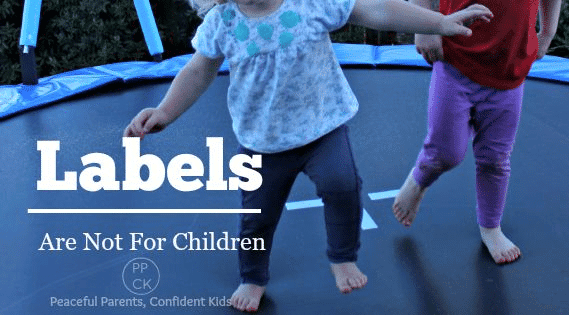The Power of Labels: Why Calling Your Child "Shy" Matters | Guide for Mindful Parenting in 2025 - LKG PDF Download
Introduction
Labels are words or phrases we use to describe someone, like “shy,” “outgoing,” or “smart.” While they may seem harmless or descriptive, labels can profoundly influence a child’s self-image, behavior, and development. The core insight is that labels shape how children perceive themselves, often becoming self-fulfilling prophecies. When a parent calls a child “shy,” they may unintentionally define the child’s identity in a way that limits their growth or confidence in social situations.
Why Labels Matter
- Self-Perception: Children internalize the labels they hear, especially from trusted figures like parents. A 2019 study in Child Development (as mentioned in your input) found that labels influence how children view themselves, which can lead to behaviors that reinforce the label. For example, a child labeled “shy” may avoid social interactions, believing it’s an unchangeable part of who they are.
- Fixed vs. Growth Mindset: Labels like “shy” can foster a fixed mindset, where a child believes their traits are static (“I’m just shy; I can’t change”). This contrasts with a growth mindset, where they see abilities as malleable through effort and practice.
- Impact on Behavior: A child labeled “shy” may hesitate to try new social activities, fearing they’ll fail because “that’s just how I am.” Over time, this can limit their social skills and confidence.
Shy vs. Introvert: Understanding the Difference
A key part of using labels wisely is understanding their meanings to avoid mislabeling a child’s behavior or personality. The terms “shy” and “introvert” are often confused, but they describe different things:
Shy: Refers to discomfort or anxiety in social situations, often driven by fear of judgment or rejection. A shy child may want to connect but feels nervous or hesitant.
- Example: A child who avoids speaking at a family gathering because they worry about saying something “wrong.”Introvert: Describes a personality trait where someone prefers solitary or low-stimulation environments and recharges through alone time. Introverts may enjoy social interactions but need breaks to avoid feeling drained.
- Example: A child who enjoys playing with friends but prefers reading alone afterward to recharge.

Why the Distinction Matters: Labeling a shy child as an “introvert” (or vice versa) can misrepresent their needs or feelings. A shy child may need support to build confidence in social settings, while an introvert may simply need space to recharge. Mislabeling can confuse their self-identity and lead parents to misunderstand their child’s behavior.
The Risks of Labeling a Child “Shy”
When a parent says, “My child is shy,” they may intend to explain their behavior to others or show empathy. However, the child overhears this and may internalize it as a defining trait. This can lead to:
- Limited Self-Image: The child may think, “I’m shy, so I can’t talk to new people,” reducing their willingness to try.
- Reduced Confidence: They may avoid situations where they could grow, like joining a club, because they believe shyness is fixed.
- Self-Fulfilling Prophecy: The 2019 Child Development study suggests that children act in ways that align with labels, reinforcing the behavior (e.g., staying quiet to “prove” they’re shy).
Reframing Labels: Practical Strategies
To avoid the pitfalls of labeling, parents can shift from fixed labels like “shy” to specific, behavior-focused, and growth-oriented language. Here are three key strategies with examples:
- Focus on Behaviors, Not Traits:
- Instead of labeling the child, describe what you observe in a specific situation and invite dialogue. This helps the child process their feelings without feeling defined by them.
- Example: Your 7-year-old hides behind you at a birthday party. Instead of saying, “Don’t be shy,” try, “I noticed you were quiet at the party. Were you feeling nervous or just taking it all in?” This opens a conversation about their emotions and shows you’re curious, not judgmental.
- Why It Works: It separates the behavior (being quiet) from their identity, encouraging them to reflect and feel understood.
- Highlight Strengths:
- Point out positive qualities associated with their behavior, such as thoughtfulness, observation, or listening skills. This builds confidence and reframes their actions positively.
- Example: If your child listens quietly during a group activity, say, “I love how thoughtful you are when you’re watching and listening to others. That’s a great skill!” This acknowledges their behavior as a strength rather than a flaw.
- Why It Works: It reinforces their value without boxing them into a label, encouraging them to see their quiet moments as assets.
- Encourage Growth and Effort:
- Praise specific efforts to engage socially, no matter how small, to foster a growth mindset. This shows that social skills can improve with practice.
- Example: If your child says hello to a new classmate, say, “I saw you say hi to Sarah today—that was a brave step! How did it feel?” This celebrates their effort and encourages them to keep trying.
- Why It Works: It shifts the focus to progress, showing that social confidence is something they can develop.

Example Scenario: Applying Reframing in Real Life
Situation: Your 10-year-old daughter, Emma, hesitates to join a group of kids playing at the park. In the past, you might have said, “Emma’s just shy,” to explain her behavior to another parent.
Reframed Approach:
- Step 1: Observe and Discuss Behavior: You notice Emma standing on the sidelines. Later, you say, “I saw you watching the kids at the park. Were you figuring out how to join in, or did you want some quiet time?” This invites Emma to share her feelings without labeling her.
- Step 2: Highlight Strengths: You add, “You’re really good at noticing what’s going on around you. That helps you understand people.” This frames her observation as a positive trait.
- Step 3: Encourage Growth: The next day, you suggest, “If you want to join the game tomorrow, maybe you could ask one person to play. I’ll be nearby if you need me.” If she tries, you say, “Great job asking to join! How was it?” This reinforces her effort.
Outcome: Emma feels supported rather than defined by “shyness.” Over time, she tries more social interactions, building confidence. She also learns to articulate her feelings, strengthening her emotional intelligence.
Why This Approach Matters
By avoiding labels like “shy,” parents help children see themselves as capable of growth. This:
- Fosters Confidence: Children feel empowered to try new things without fear of being “stuck” as shy.
- Promotes a Growth Mindset: They learn that social skills, like any skill, improve with practice.
- Builds Emotional Awareness: Open-ended questions help children understand and express their emotions, reducing anxiety in social settings.

Practical Tips for Parents
- Listen Actively: When your child seems hesitant, ask open-ended questions like, “What was it like for you at the event?” to understand their perspective.
- Model Positive Language: Avoid labels in conversations with others, especially when your child can hear. Instead of “She’s shy,” say, “She takes her time to warm up.”
- Celebrate Small Steps: Acknowledge any effort to engage socially, like making eye contact or saying hello, to build momentum.
- Educate Yourself: Learn the difference between shyness, introversion, and social anxiety to tailor your support. For example, a shy child might benefit from role-playing social scenarios, while an introvert might need downtime after events.
- Create Safe Opportunities: Arrange low-pressure social situations, like a playdate with one friend, to help your child practice without overwhelming them.
Final Takeaway
The power of labels lies in their ability to shape a child’s self-image and behavior. Calling a child “shy” can unintentionally limit their confidence and reinforce hesitancy, as supported by the Child Development study. By focusing on specific behaviors, highlighting strengths, and encouraging growth, parents can help their child see themselves as capable and adaptable. Today, try noticing one moment when you might use a label and reframe it instead. For example, swap “You’re shy” with “You took your time to feel comfortable today, and that’s okay!” This small shift can empower your child to embrace their potential and navigate the world with confidence.
|
10 docs|2 tests
|
FAQs on The Power of Labels: Why Calling Your Child "Shy" Matters - Guide for Mindful Parenting in 2025 - LKG
| 1. What is the difference between being shy and being an introvert? |  |
| 2. How can I support my shy child in social situations? |  |
| 3. Why is it important to reframe the label of "shy"? |  |
| 4. What are some common misconceptions about shy children? |  |
| 5. How can parents effectively communicate about their child's shyness? |  |
















